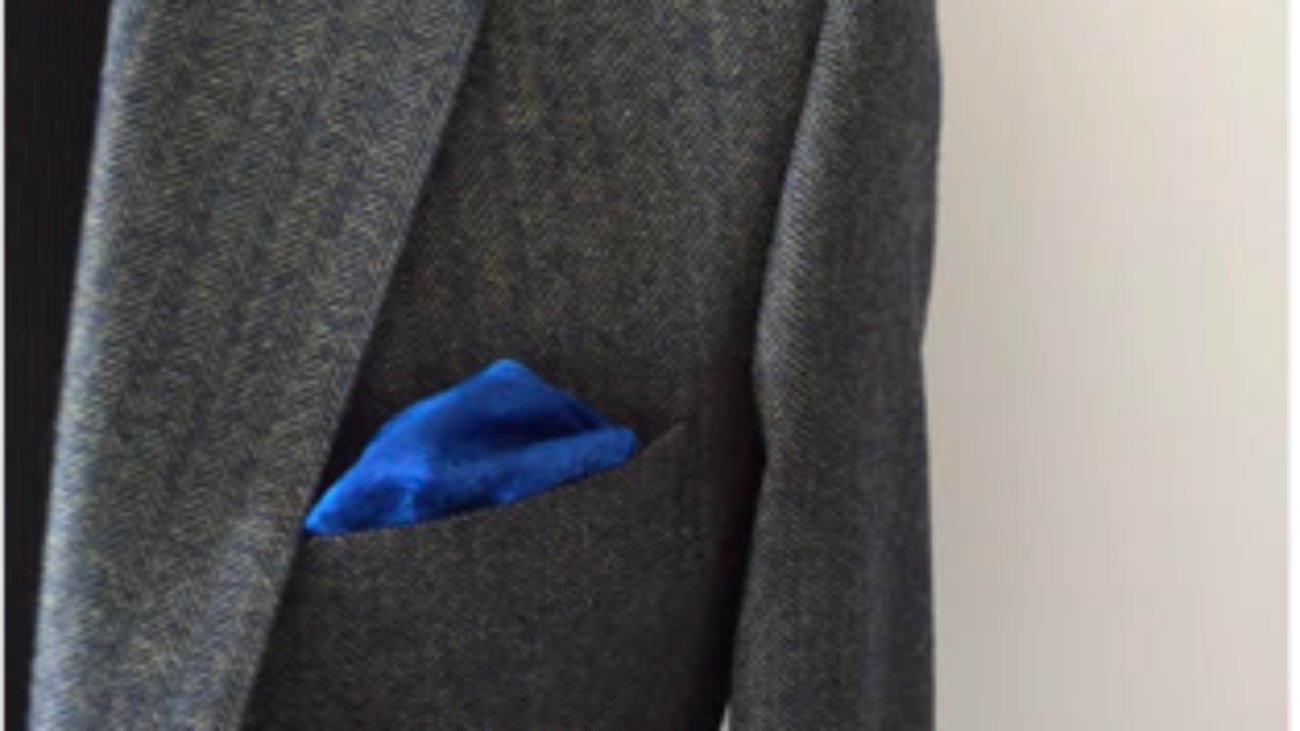Many sartorial historians agree that the origins of the pocket square can be traced back to Ancient Greece, where Greeks of a certain class carried a perfumed cloth around with them to ward off evil smells. Others point to the first century AD when Catholic Church officials attached white handkerchiefs to their left arms to signify their devotion. Others still cite historical documents written by courtiers of King Richard II that pinpoint the 14th century monarch as the official inventor of the designed-for-purpose nose-cleaning cloth.
However, is this actually what we mean when we think of the term ‘pocket square’? Is there not some difference between a piece of cloth for wiping drippage from the nose and the purely decorative pocket accessory, often stitched in place? There is now, but this was not always the case.
 The handkerchief became increasingly popular in the 1400s, when it evolved from practical item to fashion accessory, from cheap cotton cloth to fine silk square. They still came in various different shapes and sizes, but they were becoming status symbols and by the 16th and 17th centuries, embroidered silk and fine lace designs were considered highly valuable, even becoming prized family heirlooms.
It is generally believed that some conformity was introduced in the 18th century, when Marie Antoinette came to the decision that it was unseemly to have handkerchiefs of varying sizes and so had her husband Louis XVI decree a standard size of 16 square inches.
The handkerchief became increasingly popular in the 1400s, when it evolved from practical item to fashion accessory, from cheap cotton cloth to fine silk square. They still came in various different shapes and sizes, but they were becoming status symbols and by the 16th and 17th centuries, embroidered silk and fine lace designs were considered highly valuable, even becoming prized family heirlooms.
It is generally believed that some conformity was introduced in the 18th century, when Marie Antoinette came to the decision that it was unseemly to have handkerchiefs of varying sizes and so had her husband Louis XVI decree a standard size of 16 square inches.
From Handkerchief to Fashion Accessory
 The handkerchief became increasingly popular in the 1400s, when it evolved from practical item to fashion accessory, from cheap cotton cloth to fine silk square. They still came in various different shapes and sizes, but they were becoming status symbols and by the 16th and 17th centuries, embroidered silk and fine lace designs were considered highly valuable, even becoming prized family heirlooms.
It is generally believed that some conformity was introduced in the 18th century, when Marie Antoinette came to the decision that it was unseemly to have handkerchiefs of varying sizes and so had her husband Louis XVI decree a standard size of 16 square inches.
The handkerchief became increasingly popular in the 1400s, when it evolved from practical item to fashion accessory, from cheap cotton cloth to fine silk square. They still came in various different shapes and sizes, but they were becoming status symbols and by the 16th and 17th centuries, embroidered silk and fine lace designs were considered highly valuable, even becoming prized family heirlooms.
It is generally believed that some conformity was introduced in the 18th century, when Marie Antoinette came to the decision that it was unseemly to have handkerchiefs of varying sizes and so had her husband Louis XVI decree a standard size of 16 square inches.

